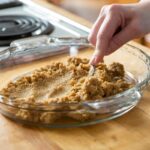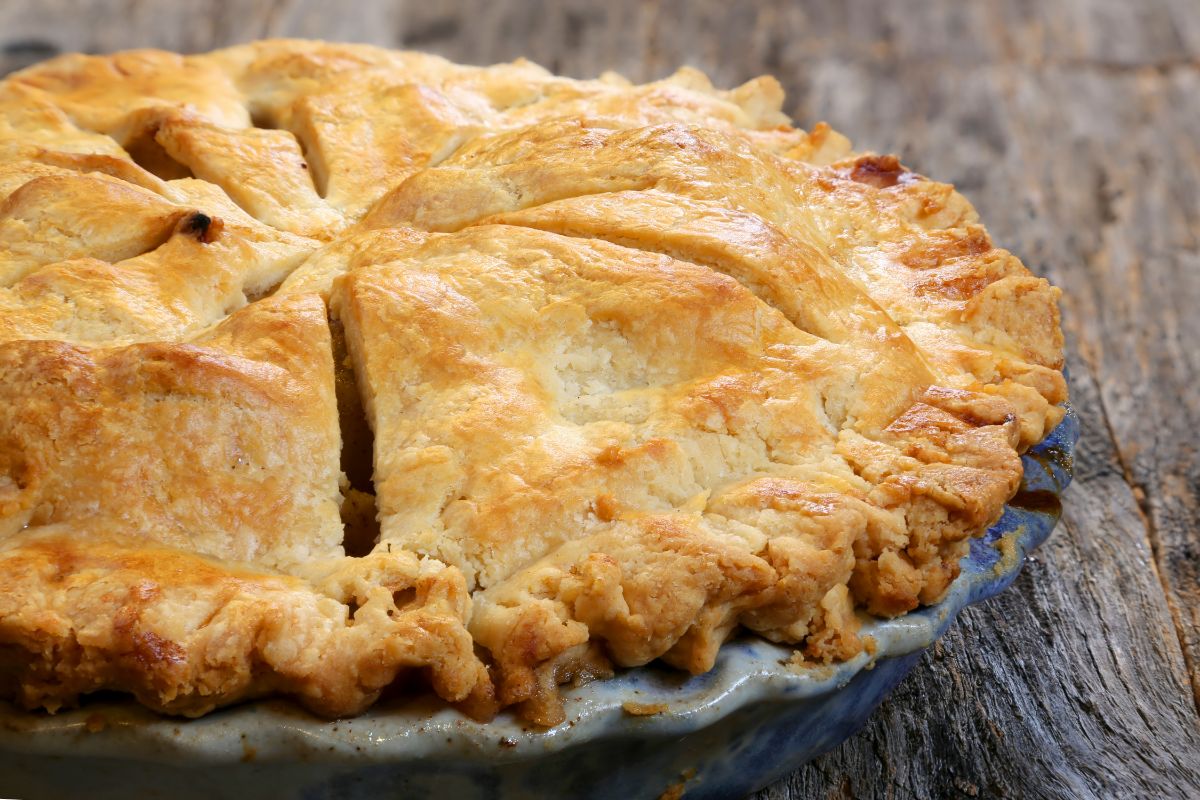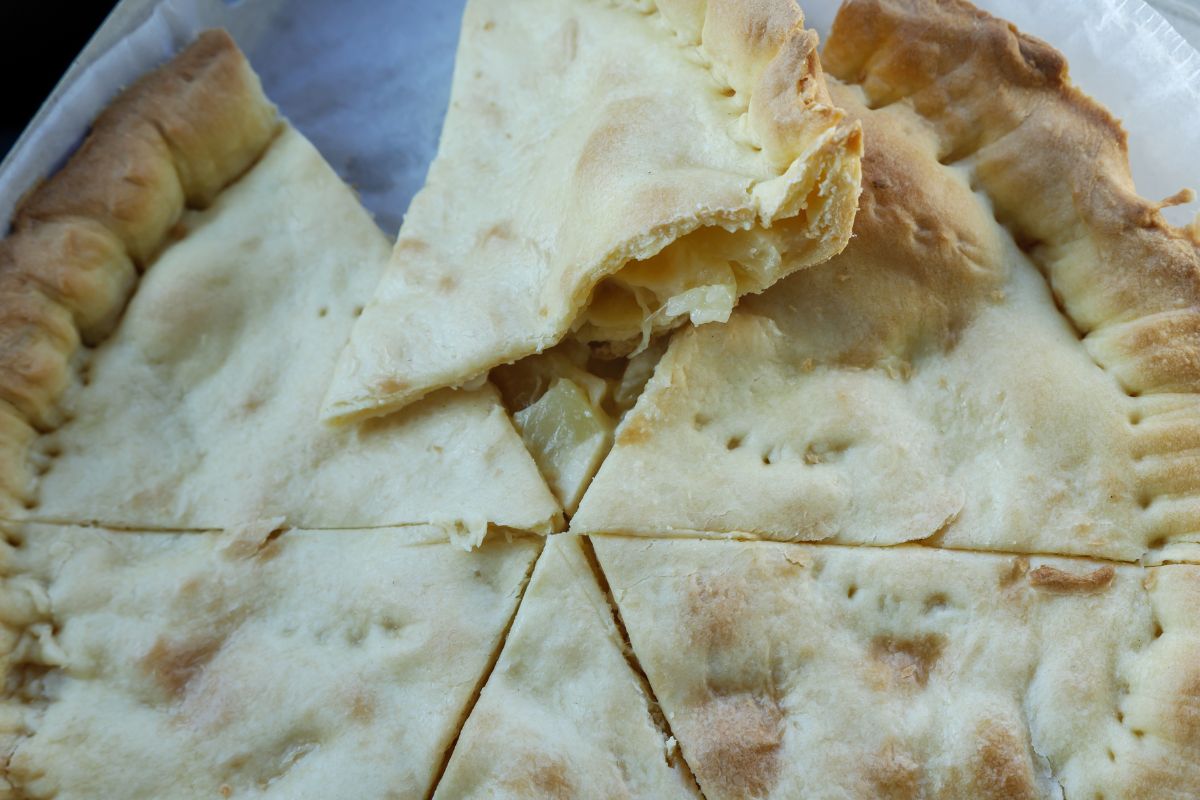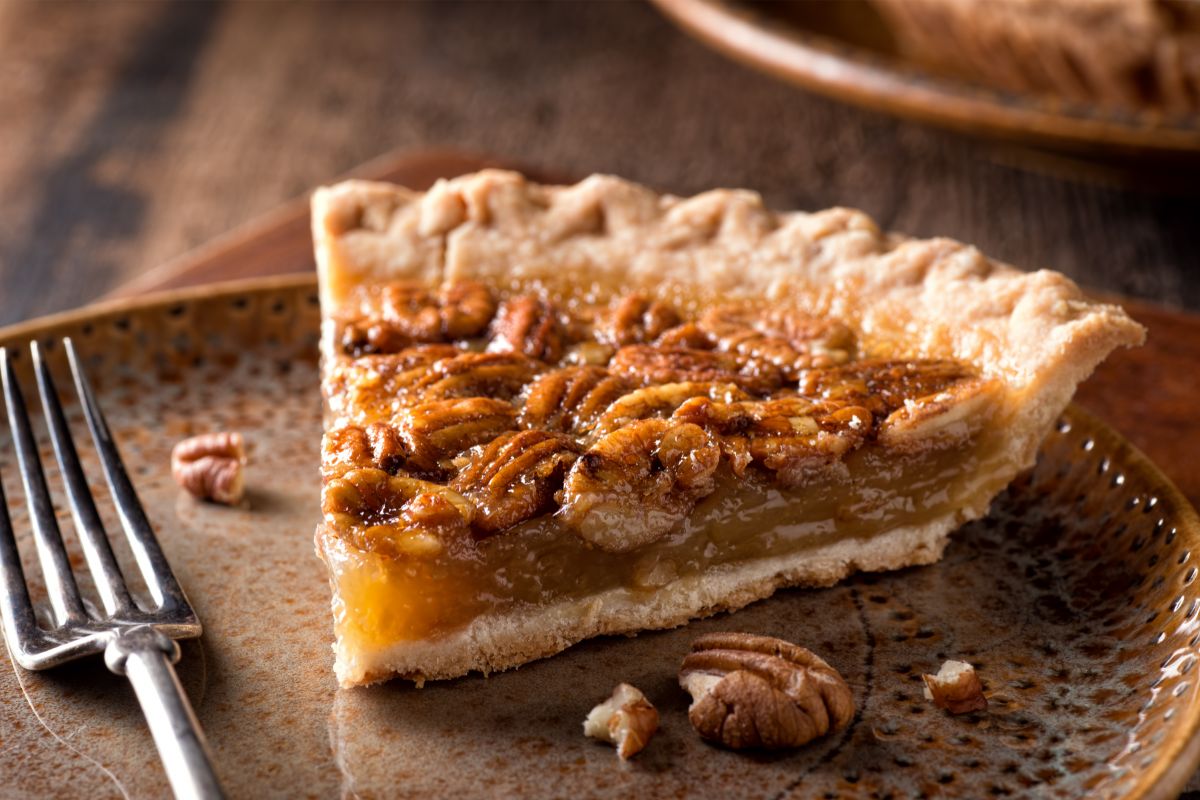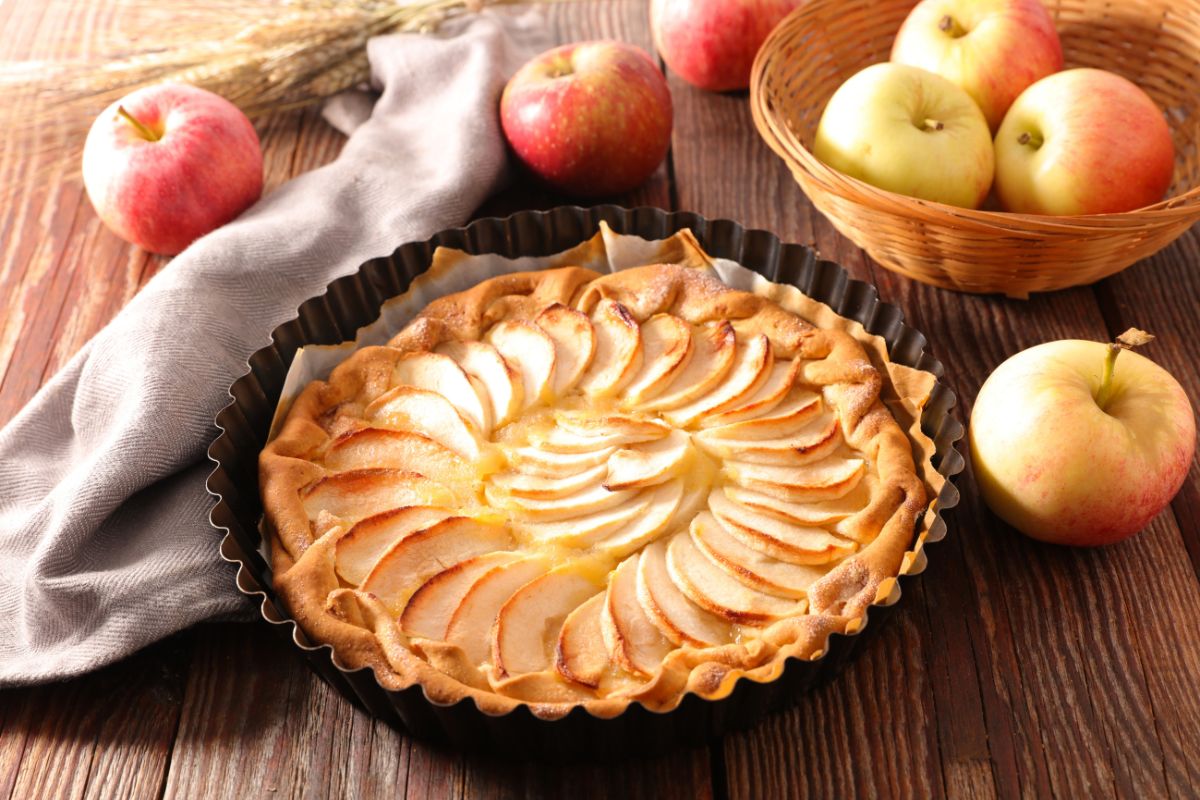Pie crust is traditionally made using water, salt, fat, butter, and flour. It is the baked outer shell of a pie dish.
Egg wash is typically applied to the crust prior to baking in order to achieve a glossy browned finish.
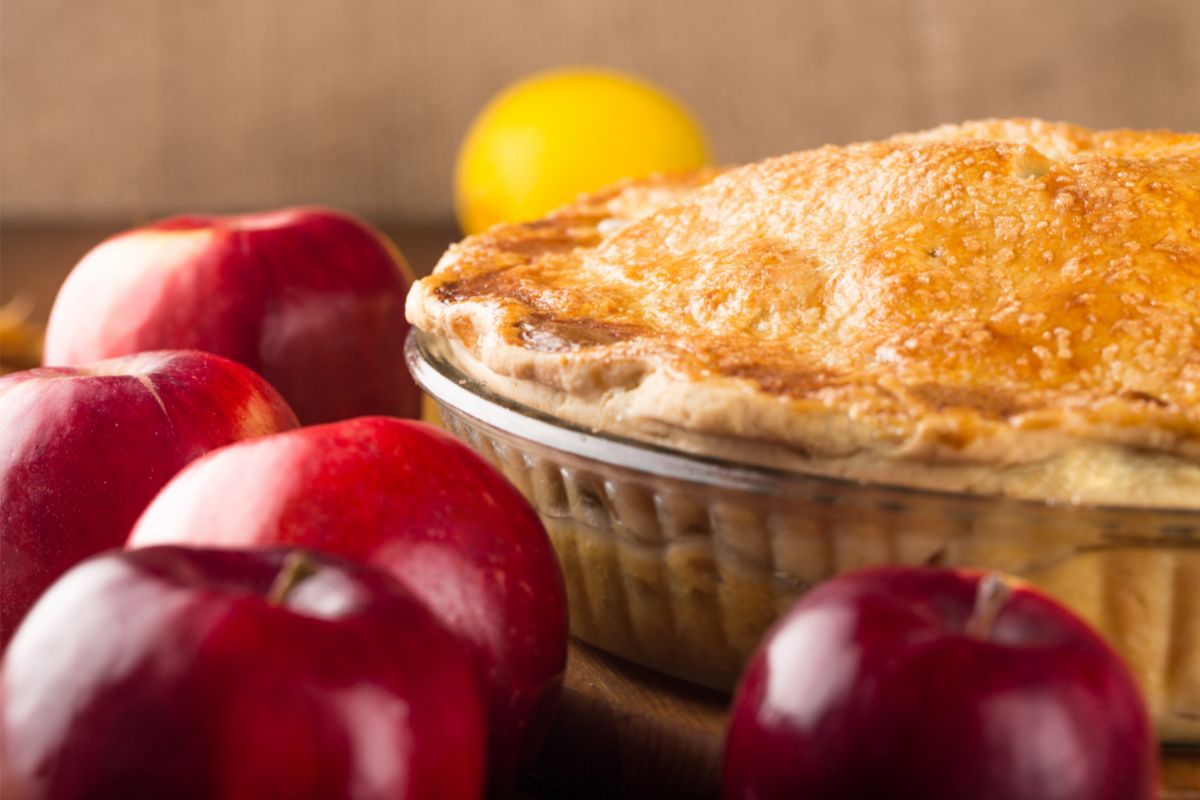
A successful pie crust will normally cover an entire pie plate. However, some pie crusts will cover the bottom of a pie plate.
Other pies, like apple pie, will have two crusts covering the top and bottom of the pie’s filling.
It is always imperative to ensure that your pie’s crust does not shrink during the cooking process in order to make sure that your pie is held together successfully.
What Is Blind Baking?
The technique of blind baking involves baking dough by itself and serving it alongside unbanked fillings that include fruit and pastry cream.
Bakers will normally blind bake crusts whenever they are making fruit or custard pies.
Blind baking can result in pastry crusts becoming too small, and they can also shrink during the cooking process.
Fortunately, there are key steps that you can implement to prevent this from occurring and I have outlined these below.
How To Prevent Pie Crust From Shrinking
A pie crust may become shrunken during the blind baking or regular baking process.
In order to prevent your pie crust from shrinking, you should do the following:
1) Do Not Overwork The Dough
Overworking pie dough will inherently activate the gluten contained within the mixture which causes the dough to become too firm and inevitably shrink when placed inside the oven.
2) Add Water To Your Dough Mixture
Adding water to your dough, one tablespoon at a time, ensures that the dough mixture remains consistently together whenever pressure is applied.
The water will then evaporate when the pie is baking, however, if you add too much water to your dough, the pie will inevitably shrink.
3) Place Small Holes In The Crust
Pricking holes in the crust will prevent it from inflating and puffing up too much.
Thus, whenever you are blind baking, you should prick the crust using a fork.
Leave an inch between each marking in order to create holes for steam to be released.
4) Use Some Pie Weights
After you have lined your crust using parchment paper or foil, use some pie weights in order to prevent it from sliding downwards and shrinking in size.
These pie weights are a great addition. However, you can also use uncooked rice or dry beans to prevent slippage.
5) Use A Ceramic Or Metal Plate
Glass pans are far more slippery than ceramic or metal plates.
Thus, pies that are placed within glass plates will shrink more often.
This is because it is far easier for your crust to slice down the side of glass dishes.
6) Bake Your Pie At The Correct Temperature
A baking temperature that is far too high will result in the gluten tightening up and your pie crust shrinking inherently.
Thus, you should bake your pie at a low temperature of approximately 350 degrees Fahrenheit.
7) Cool Your Pie Crust
After you have rolled out your crust, allow your dough to rest within a fridge for approximately thirty minutes.
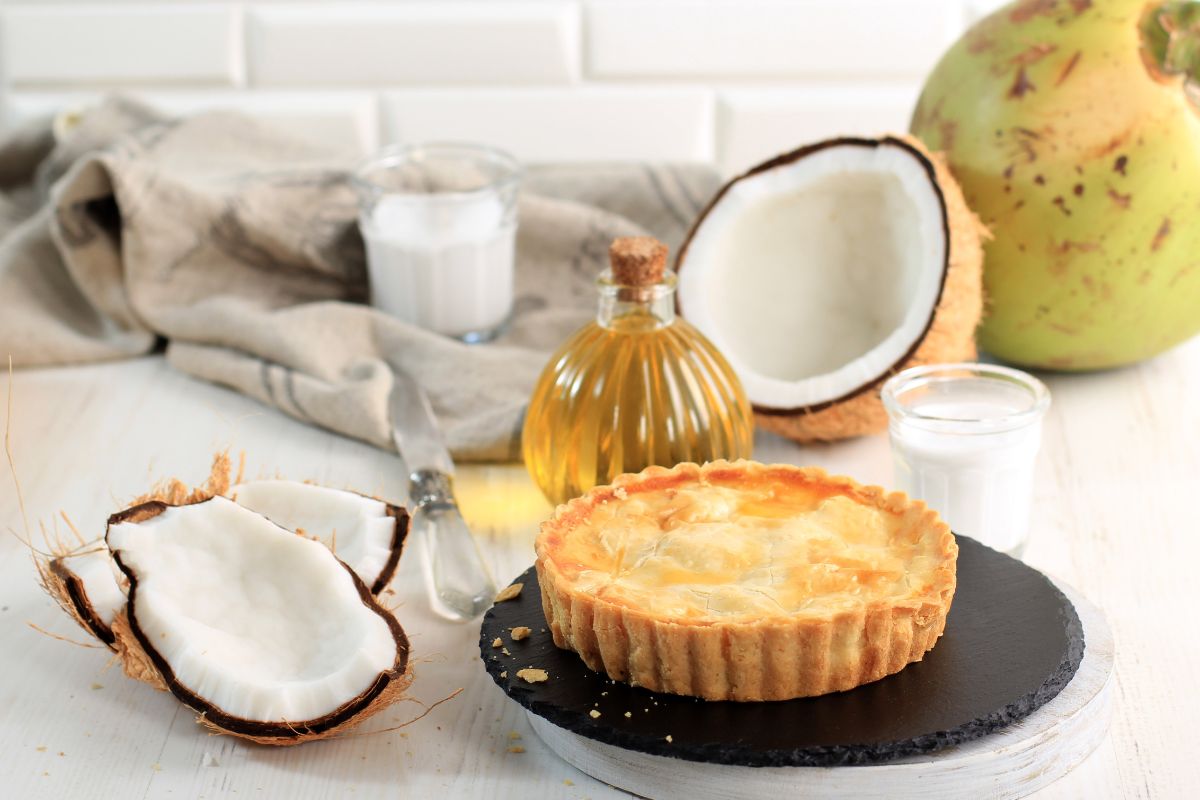
This will ensure that any fat contained within the dough can solidify and the gluten contained therein can relax.
This leads to a flakier crust that is less likely to shrink when cooked.
8) Make Thicker Edges
You can thicken the edges of your crust, ensuring that they are thicker than the crust’s bottom.
This helps to weigh down your pie crust and prevent the edges from sliding down your plate.
Whenever you roll out dough onto the pie dish, any excess dough may appear at the edge of the pie.
This overhanging dough should be rolled under the edge of the crust before being crimped.
Why Does Pie Crust Shrink?
One of the main reasons why pie crusts tend to shrink is because the dough has not been allowed to rest for a long period of time.
This resting time is crucial as it allows the dough to process gluten, ensuring that it relaxes appropriately.
This plays a key role in preventing your pie crust from shrinking when baked.
What Causes A Crust To Shrink When Baked?
When cooked at high temperatures, the gluten within the flour will tighten.
This tightening process results in the dough shrinking.
However, if pies are baked at a far gentler heat, the crust will shrink far less.
Other factors that contribute towards crust shrinkage are overworking the dough and not chilling it proficiently prior to placing it into the oven to bake.
Conclusion
To conclude, in order to prevent pie crust from shrinking it is essential that you have not overworked the dough and have given it enough time to rest within a refrigerator prior to placing your pie in the oven.
This is because the gluten proteins contained within the crust will tighten if you have not given enough time for them to relax.
Adding vinegar to your pie crust may prevent it from shrinking.
This is because the acidity contained within vinegar will naturally relax the gluten contained within the crust, ensuring that the gluten protein molecules do not tighten up and cause shrinkage.
It is also key that you do not cook your pie at a high temperature as the heat will cause your pie crust to shrink more readily.
Thus, you should only cook your pie at low temperatures of approximately 350 degrees Fahrenheit.
This will ensure that your pie crust is golden brown and delightfully fluffy without becoming shrunken, misshapen and inedible.
I hope that you have found this article to be insightful and informative. Thank you for reading.
- How To Reheat A Cheesesteak - November 5, 2023
- What Are Three Must Have Kitchen Knives? - September 22, 2023
- How To Protect Edges Of Pie Crust - June 15, 2023

